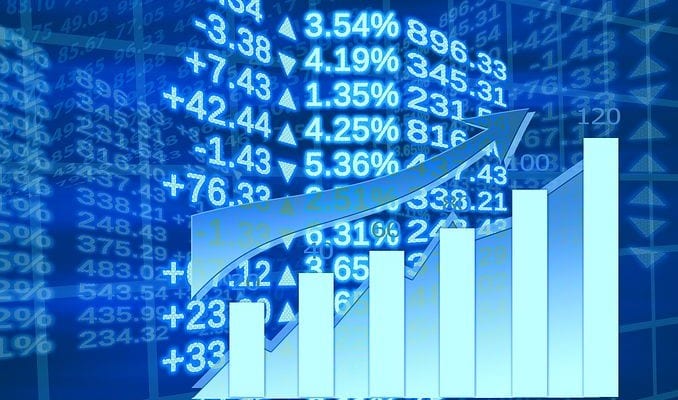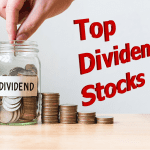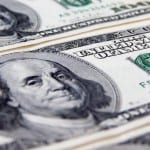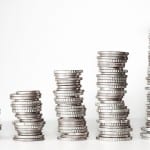Dividend Definitions – What is Dividend Rate?
By: Ned Piplovic,

A dividend rate is the sum of all dividend distributions from a security or a portfolio that an investor receives for a particular period.
While the definition is quite simple and straightforward, a dividend rate has many implications that investors should learn and understand to have a reasonably high chance of selecting investments with the best growth potential and long-term total returns. Investors must understand what comprises the dividend rate, how the dividend rate can be calculated for a given period, how the dividend rate differs from the dividend yield and more.
Dividend income investing is a complex topic and a single article can not possibly explain all aspects and considerations of such a multifaceted process. However, this article intends to provide a few basic concepts and guidelines to investors interested in building on these basics to achieve a more extensive understanding of income investing. Interested investors have a cornucopia of resources available for further research, including a number of additional articles available on DividendInvestor.com.
Dividend Rate
The dividend rate is the total dividend income amount that an investor can expect to receive from an income-paying equity. While a high dividend rate is obviously desirable, investors must take other aspects of the dividend distribution into account to determine which investment is best suited for their particular portfolio strategy.
To calculate the total dividend rate for a year, investors must add all the regular dividend payouts for that period, as well as add any on-time and special dividend payouts that equities pay only on special occasions to distribute extraordinary earnings, unplanned cash inflows or asset sales to the equity’s stakeholders. Some examples of special dividends are business divestitures, lawsuit awards and investment liquidations. While one year is the most common period for the dividend rate calculation, dividend rates can express other periods depending on the frequency of dividend distributions.
Dividend Frequency
Equities distribute their dividends at different intervals and there are no requirements to force any equity or company to use one distribution frequency over another. Equities frequently use quarterly dividend distributions because this frequency aligns with the quarterly results reporting schedule in North America. However, as Europe and Japan adhere to a twice-per-year corporate earnings reporting requirement, companies based in those regions tend to distribute their regular dividends semiannually. Additionally, some equities distribute their dividends only once per year and other equities – usually diversified funds, Master Limited Partnerships, Real Estate Investment Trusts, etc. – provide their stakeholders with monthly dividend income payouts.
Regardless of the distribution frequency, the dividend rate for any year is the product of the current payment amount and the number of distribution periods in the year. A company that pays a $0.40 quarterly dividend has a dividend rate of $1.60 for that year. Furthermore, if that company pays one $0.60 special dividend during the year, the total dividend rate rises to $2.20 for that year. Similarly, a $0.25 monthly dividend payout corresponds to a $3.00 annual dividend rate before any special dividend distributions, a $0.50 semiannual dividend into a $1.00 annual payout, etc.
To accurately calculate the dividend rate, investors also must account for any dividend hikes that occur during the year. What if the company from the first example above increases its quarterly dividend from $0.40 to $0.45 for the third-quarter distribution and beyond? In that case, the total dividend rate will be $1.70 for the full year – (2 x $0.40) + (2 x $0.45) – instead of the previous $1.60 total annual amount that comprised only of regular dividend payouts.
Dividend Rate versus Dividend Yield
Investors must not confuse the dividend rate with the Dividend Yield. The dividend rate indicates a total amount of annualized dividend payouts and is expressed in dollars – or local currency for foreign equities. However, the dividend yield is expressed as a percentage and indicates the ratio of the dividend rate and the company’s current share price.
A higher yield indicates a heightened return on investment. However, while a higher dividend rate represents a higher current income, it does not necessarily mean higher returns. An investor can generate $2,000 of dividend income from a position of 1,000 shares in a company that pays a total annual dividend of $2.00 per share. If the price of one share is $80, the dividend yield is 2.5%. Therefore, the investor is receiving a 2.5% on the funds invested in that company’s stock. However, if another company with the same $2.00 annual dividend rate sells its shares for only $50, the dividend yield would be 4%. Therefore, the same annual dividend amount invested in the second company’s stock would generate a 4% income on investment, which is 60% higher than the first company’s 2.5% return.
Additional Dividend Metrics
While dividend rates and yields are very important for determining total annual income and return on investment, investors must consider additional dividend metrics to ensure optimal investment selection for their chosen portfolio strategy. Both indicators – the dividend yield and rate – are simple to calculate and use. However, their simplicity is also their main shortcoming. As already indicated, the dividend rate does not account for return on investment rates and dividend yield can be misleading by showing artificial increases driven by declining share prices.
Therefore, investors use in their selection process additional indicators like the Dividend Payout Ratio , which represents the share of the company’s total earnings distributed as regular dividend payouts. Another way to calculate the same ratio is to divide the current dividend payout amount with the company’s earnings per share (EPS) for the same period. The dividend payout ratio reveals whether the current dividend distributions are sufficiently covered by the company’s earnings. This information allows investors to speculate whether the company should be able to sustain the current dividend rates – or potentially increase the rates – over extended time horizons.
Sustainable payout ratio
Investors generally seek a dividend payout ratio between 30% and 50%. Because companies with ratios above 50% distribute more than half of their earnings as dividends, investors must pay closer attention to the payout ratio. As the ratio rises closer to 100%, the company might not retain sufficient funds to support business expansion and operational expenses. This lack of business expansion might result in poor financial performance and could lead to potential dividend cuts or outright elimination of dividend distributions in the future. Dividend ratios below 30% generally indicate that the company is not distributing enough of its earnings for income-seeking investors – who will generally look out alternative investments with higher payout ratios under those circumstances.
Another important consideration is dividend growth, which shows a total gain over a specific period or standard compounded annual growth rate (CAGR). A steady growth of dividend rates is important because flat dividend distributions suffer diminished returns from inflation, as well as reduced yields as equity stock prices generally tend to rise over the long term.
Summary
Dividend income distributions are an important component of an overall portfolio strategy. To execute that strategy efficiently and gain maximum returns on investment, investors must consider an abundance of factors and a large set of metrics. In addition to the dividend yield, rate, payout ratio and growth mentioned above, investors must consider dividend dates, dividend types, dividend classifications, taxation implications and more.
However, despite the many options and multiple consideration factors, investors can execute a strategy to build a portfolio that will deliver a steady and reliable source of dividend income as a supplement to a portfolio’s equities chosen for their long-term capital gains.
Dividend increases and dividend decreases, new dividend announcements, dividend suspensions and other dividend changes occur daily. To make sure you don’t miss any important announcements, sign up for our E-mail Alerts. Let us do the hard work of gathering the data and sending the relevant information directly to your inbox.
In addition to E-mail Alerts, you will have access to our powerful dividend research tools. Take a quick video tour of the tools suite.








 Connect with Ned Piplovic
Connect with Ned Piplovic
